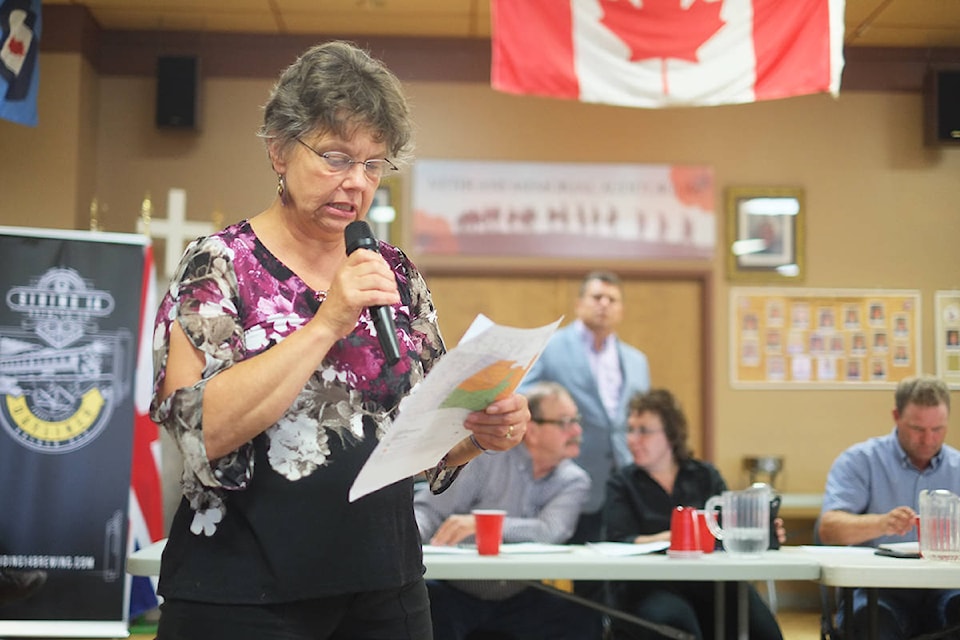By Jessica Jones for Ponoka News
Ponoka County council pulled back on the reins for plans that could place exclusion zones on further development of confined feeding operations (CFOs).
Ponoka County council previously approved first reading of area structure plans (ASPs) for the area around Morningside and the region northwest of the Town of Ponoka, which would place exclusion zones on further development of confined feeding operations (CFOs). Council originally intended to have public hearings held for the two ASPs on Aug. 13.
Instead, the meeting was held as an information meeting rather than the official advertised public hearing (the county cancelled the public hearing notice on Aug. 7), which has been postponed to a later date in October, explained CAO Charlie Cutforth. Nevertheless, both meetings on Aug. 13 were attended by more than 100 area residents, many who consider the possible changes to be an affront on industry.
“That was never our intention,” Cutforth told a packed room at the Ponoka Legion on the evening of Aug. 13.
“I regret there was an accelerated timeline on this,” he said. “In hindsight do I wish we hadn’t done that? Yes, in spades.”
What triggered the immediate action for council to create the plans, which attempt to address the influx of CFOs in the two areas, and strike a balance between residential acreages and agricultural development, was to meet approval timelines put in place by the Natural Resources Conservation Board (NRCB) — the regulatory body for CFOs.
Once those timelines were no longer an issue, Cutforth mentioned that council realized there was no longer a need for an expedited process for the land located between Highway 2, one mile west of the Battle River, bordering north and south by Menaik Road and Highway 53.
“Had we known there was going to be this much opposition I’m confident that council would never have accelerated this in the first place,” Cutforth said.
Many residents voiced concerns over the livelihood of family farms, the possible inability to grow economically, and the impact on industry that such changes could make if exclusion zones were placed on CFOs.
Cutforth explained, however, that the exclusions wouldn’t mean that existing CFOs would “need to stop and move out.”
“The land will be used for agricultural production; it doesn’t mean the land won’t be farmed,” Cutforth said at the meeting. “We are just trying to balance out everything and so people can know what they can look for in the future. We want to work with folks and create an environment where we can all get along.”
Bob Riddett, a registered professional planner hired by Ponoka County, noted that he will be taking all the comments into deliberation and will review the plans. There were some recommended changes that reduce the boundaries of the areas considered and council will see an amended draft of this by the middle of September.
The appropriate notification and advertisement of the official public hearings will be posted soon, with a potential date being Oct. 2.
All of council was in attendance at the information meeting, however, Coun. Mark Matejka declared conflict of interest as he owns a parcel of land in the Morningside area. He was in attendance as a resident of the county.
Ponoka News will publish the discussion from the afternoon meeting in next week’s edition of the paper.
